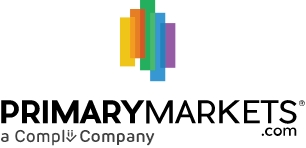Obstructive Sleep Apnoea (OSA) is a medical disorder that is reaching near-pandemic levels with an estimated prevalence of 1 billion people worldwide. There are more than 90 million sufferers in the US, Australia, Germany and the UK alone.
What is Obstructive Sleep Apnoea?
While OSA has been associated with snoring, it is much more than that. OSA occurs when airways are blocked during sleep, causing breathing to stop for 10 seconds or more, 5 – 50 times per hour.
The medical, social and financial implications are enormous and very poorly understood. Current treatments, which mostly require sufferers to wear uncomfortable devices while sleeping, are generally unacceptable to patients who often forego or stop treatment. Even when used, the available devices or surgical options are often unsuccessful due to patient non-adherence. There is a very real and substantial need for new innovative treatments that don’t require uncomfortable devices to be worn. Sufferers are looking for treatment options not yet on the market, namely drugs or pharmacotherapies.
What are the medical problems associated with OSA?
OSA has been linked to an increased risk of stroke, heart failure, diabetes, asthma, insomnia and depression/anxiety.
What are some of the social problems associated with OSA?
OSA is associated with next day sleepiness, which has implications for interpersonal relationships, workplace and industrial accidents, lost productivity and absenteeism. There are also issues with cognitive function, quality of life, mood, energy levels and substance abuse.
What are the costs associated with OSA? According to a 2016 study commissioned by the American Academy of Sleep Medicine, the annual economic cost of OSA in the US alone exceeds US$160 billion. Over the ensuing 7 years the costs have risen significantly.

How is OSA treated today?
Current treatments for OSA involve continuous positive airway pressure (CPAP) via a mechanical breathing device that has poor patient compliance and low satisfaction. There are also oral appliances and surgical procedures.
There are currently no approved drug treatments for OSA and many people are undiagnosed, often because they refuse to undergo diagnosis in the absence of desirable treatment options.
Historically, OSA could only be diagnosed in an overnight sleep lab, which discouraged many people from being diagnosed. Today, there are home test kits that make obtaining a diagnosis much easier.
Combined with better treatment options, this bodes well for the potential to bring significant portions of both the undiagnosed and diagnosed population into treatment.
What is on the horizon?
While the CPAP and oral appliance companies try to improve their products, this has seen limited success. Further, several recently published studies have called into question the value of CPAP as a treatment of first choice.
Instead, several companies are developing potential drug treatments for OSA. At the forefront is ResolutionRx, an Australian company that is a subsidiary of a US publicly traded company (RespireRx).
ResolutionRx has conducted two clinical trials demonstrating the effectiveness of the active ingredient in its leading drug candidate and is poised to commence OSA clinical trials with a new, improved chemical form in Australia and around the world.

The ResolutionRx commercial strategy focuses on re-purposing drugs already approved for other therapeutic uses and finding new uses and better chemical forms. With the active ingredient in the company’s lead drug formulation already an approved drug, ResolutionRx is re-purposing it for the treatment of OSA.
ResolutionRx has approved and pending patents for a new treatment of use, improved chemical forms and blood levels that will protect their market position.
This re-purposing approach creates a process that allows for a more rapid approval by regulatory authorities.

PrimaryMarkets provides investors with access to companies that are shaping the future of global industries, standing at the forefront of medical and healthcare innovation and providing access to opportunities previously only accessible to institutional investors.
PrimaryMarkets has raised capital for companies at the leading edge of the development of new drugs, devices and diagnostics to treat poorly and unmet medical needs. We provide investors with access to companies and services that are shaping the future of global industries.
PrimaryMarkets exemplifies how innovation can transform the way we invest, trade and raise capital by breaking down traditional barriers, providing liquidity solutions and promoting transparency. As the Platform continues to grow and evolve, it promises to unlock even more opportunities for investors and companies, shaping the future of finance for the better.

